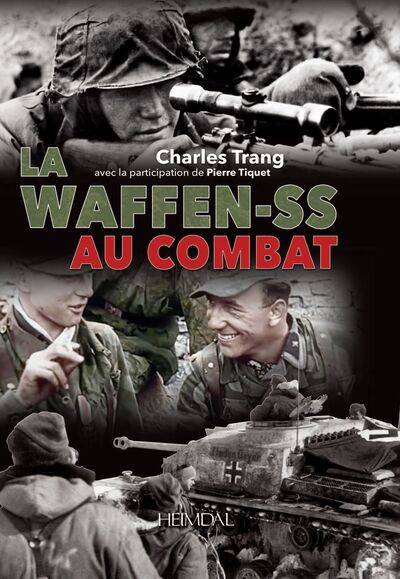
- Retrait gratuit dans votre magasin Club
- 7.000.000 titres dans notre catalogue
- Payer en toute sécurité
- Toujours un magasin près de chez vous
- Retrait gratuit dans votre magasin Club
- 7.000.0000 titres dans notre catalogue
- Payer en toute sécurité
- Toujours un magasin près de chez vous
Description
La Waffen-SS au combat
La Waffen-SS est l'un des sujets de l'histoire militaire parmi ceux qui attirent le plus de curiosité. D'une petite garde prétorienne très élitiste, représentant les concepts de « pureté raciale » germanique, elle a fini par drainer environ un million de combattants de plus en plus éclectiques dont la qualité militaire allait de l'élite à la plus grande à la médiocrité et qui, à côté de troupes remarquables, alignait des unités de tueurs. Cet ouvrage présentant une iconographie très largement inédite correspondra aux attentes des amateurs d'histoire les plus exigeants, par la qualité exceptionnelle de cette iconographie mais aussi par les commentaires sans concessions qui expriment très largement la diversité de ces aspects.
Les chapitres déroulent cette histoire, de l'avant-guerre aux camps de prisonniers, en passant par la campagne de Pologne, la guerre à l'Ouest en 1940, les Balkans, la Grèce, Barbarossa puis divers chapitres sur la guerre à l'Est mais aussi en Finlande, dans les Balkans, en Normandie. Pour chaque période, les photos ont été choisies, et commentées, pour en présenter les particularités, les officiers, les unités liées à chacune d'elles.
Parmi les très nombreux ouvrages consacrés à cette thématique, celui-ci répond à de nombreuses questions concernant la diversité de cette troupe, c'est un document incontournable pour la connaissance de cette histoire.
The Waffen-SS is one of the most curious subjects in military history. From a small, highly elitist Praetorian Guard, representing Germanic concepts of « racial purity, » it ended up draining about a million increasingly eclectic fighters whose military quality ranged from elite to the largest to mediocrity, and who, alongside remarkable troops, lined up units of killers. This book, presenting a largely new iconography, will meet the expectations of the most demanding history lovers, by the exceptional quality of this iconography, but also by the uncompromising comments that largely express the diversity of these aspects. The chapters unfold this history, from the pre-war period to the prison camps, through the Polish campaign, the war in the West in 1940, the Balkans, Greece, Barbarossa and then various chapters on the war in the East but also in Finland, the Balkans and Normandy. For each period, the photos were chosen and commented on to present their peculiarities, the officers, the units linked to each of them.
Among the many books devoted to this theme, this one answers many questions concerning the diversity of this troupe, it is an essential document for the knowledge of this history.
Spécifications
Parties prenantes
- Auteur(s) :
- Editeur:
Contenu
- Nombre de pages :
- 587
- Langue:
- Français, Anglais
Caractéristiques
- EAN:
- 9782840486046
- Date de parution :
- 28-02-24
- Format:
- Livre relié
- Dimensions :
- 220 mm x 310 mm
- Poids :
- 2330 g

Les avis
Nous publions uniquement les avis qui respectent les conditions requises. Consultez nos conditions pour les avis.






